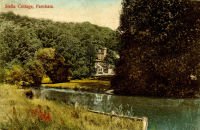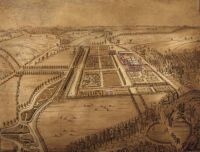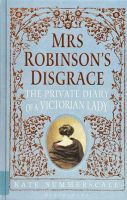Formerly known as Compton Hall, the house has stood on the site by the River Wey in the hamlet of Compton near Farnham since 1307. It was bought and remodelled by its most notable owner, diplomat and essayist Sir William Temple in the 1680s. He renamed it Moor Park after the Hertfordshire mansion he had previously owned, which also inspired the magnificent five acres of formal gardens he laid out between the house and the river. Here he entertained many distinguished visitors, including William III, John Dryden, Joseph Addison and Richard Steele.
 At Moor Park, Temple employed Jonathan Swift as his secretary who wrote there A Tale of a Tub and The Battle of the Books. It was also here that Swift met Esther Johnson, the fatherless daughter of one of the household servants. Swift acted as her tutor and mentor, giving her the nickname "Stella" and the two maintained a close relationship for the rest of Esther's life. A local cottage still bears her name.
At Moor Park, Temple employed Jonathan Swift as his secretary who wrote there A Tale of a Tub and The Battle of the Books. It was also here that Swift met Esther Johnson, the fatherless daughter of one of the household servants. Swift acted as her tutor and mentor, giving her the nickname "Stella" and the two maintained a close relationship for the rest of Esther's life. A local cottage still bears her name.
Following Temple's death in 1699, the house remained in his family until the mid-1930s, but during the nineteenth-century it was leased to Dr Edward Lane and became a very popular hydrotherapy spa, with some distinguished patrons, including Charles Darwin who wrote in his diary, "the country is very pleasant for walking...it is really quite astonishing & utterly unaccountable the good this one week has done me".
 On 23 January 1897, the Surrey Advertiser reported on the 'extraordinary scenes' of the Moor Park 'battle'. One of Temple's descendants, Sir William Rose, had informed Farnham Urban District Council that he intended to close the lodge gates of Moor Park to the public and "not allow any person to enter without written authority". The council informed Rose's solicitor that "they had no doubt as to the rights of way over Moor Park and were resolved at whatever cost to use all proper means to preserve such rights". Sir William brought in former Metropolitan policemen to support his estate workers and closed and chained the gates. Events came to a climax on 17 January 1897 when a large crowd of over 100 local men and women armed with sticks and other implements gathered to cheer the council's men as they forced open the gates with crowbars.
On 23 January 1897, the Surrey Advertiser reported on the 'extraordinary scenes' of the Moor Park 'battle'. One of Temple's descendants, Sir William Rose, had informed Farnham Urban District Council that he intended to close the lodge gates of Moor Park to the public and "not allow any person to enter without written authority". The council informed Rose's solicitor that "they had no doubt as to the rights of way over Moor Park and were resolved at whatever cost to use all proper means to preserve such rights". Sir William brought in former Metropolitan policemen to support his estate workers and closed and chained the gates. Events came to a climax on 17 January 1897 when a large crowd of over 100 local men and women armed with sticks and other implements gathered to cheer the council's men as they forced open the gates with crowbars.
Today the path is well maintained (and open to the public!), passing close by the house, now refurbished and converted into luxury flats. It forms a pleasant walk to a Nature Reserve, managed by the Surrey Wildlife Trust, alongside the River Wey.
Further sources of information on Moor Park held at Surrey History Centre include:
1195/- Moor Park estate, Farnham: deeds, 17th to 19th century
2196/- Farnham Rural District Council: minutes, 1895 to 1941
6316/- Frith photographs
9009/- Moor Park House, Farnham: report on garden by Farnham Decorative and Fine Arts Society, 2012
A Victorian scandal
'On a mild winter's evening in 1850, Isabella Robinson set out for a party. Her carriage drew up at 8 Royal Circus, a grand sandstone terrace in Edinburgh's new town... When Mrs Robinson joined the throng she was at once enchanted by a Mr Edward Lane, a handsome medical student ten years her junior. He was 'fascinating', she told her diary, before chastising herself for being so susceptible to a man's charms. But a wish had taken hold of her, which she was to find hard to shake...' [From 'Mrs Robinson's disgrace: the private diary of a Victorian lady' by Kate Summerscale (Bloomsbury, 2012) Library ref 920ROB]
 So began the obsessive and passionate account in Isabella Robinson's diary of their 'affair', as fictionalised by Kate Summerscale in her best-selling novel. The diary covered many years of their acquaintance, first in Edinburgh and later in Farnham at Moor Park, where (by then) Dr Lane had established a modern spa designed to heal the mental afflictions and physical debilities of the Victorian upper and middle-classes.
So began the obsessive and passionate account in Isabella Robinson's diary of their 'affair', as fictionalised by Kate Summerscale in her best-selling novel. The diary covered many years of their acquaintance, first in Edinburgh and later in Farnham at Moor Park, where (by then) Dr Lane had established a modern spa designed to heal the mental afflictions and physical debilities of the Victorian upper and middle-classes.
Whether the affair was real or an imaginative construct became the very public debate of the High Court and national newspapers when Isabella's husband tried to divorce her and cited the diary as evidence against Dr Lane. Kate Summerscale has skilfully reconstructed the story of Isabella, sympathetically interpreting the recorded events and imagining the emotions and motivations of those involved.
Images
Select image to view a larger version.
- Postcard of Stella Cottage, Farnham, postmarked 1907 (SHC ref PC/64/ALB2/52)
- Painting of Moor Park, Farnham, attributed to Leonard Knyff and/or Johannes Kip, c.1690 (SHC ref PX/64/148)
- Cover of Kate Summerscale's novel, 'Mrs Robinson's disgrace: the private diary of a Victorian lady' (2012)


